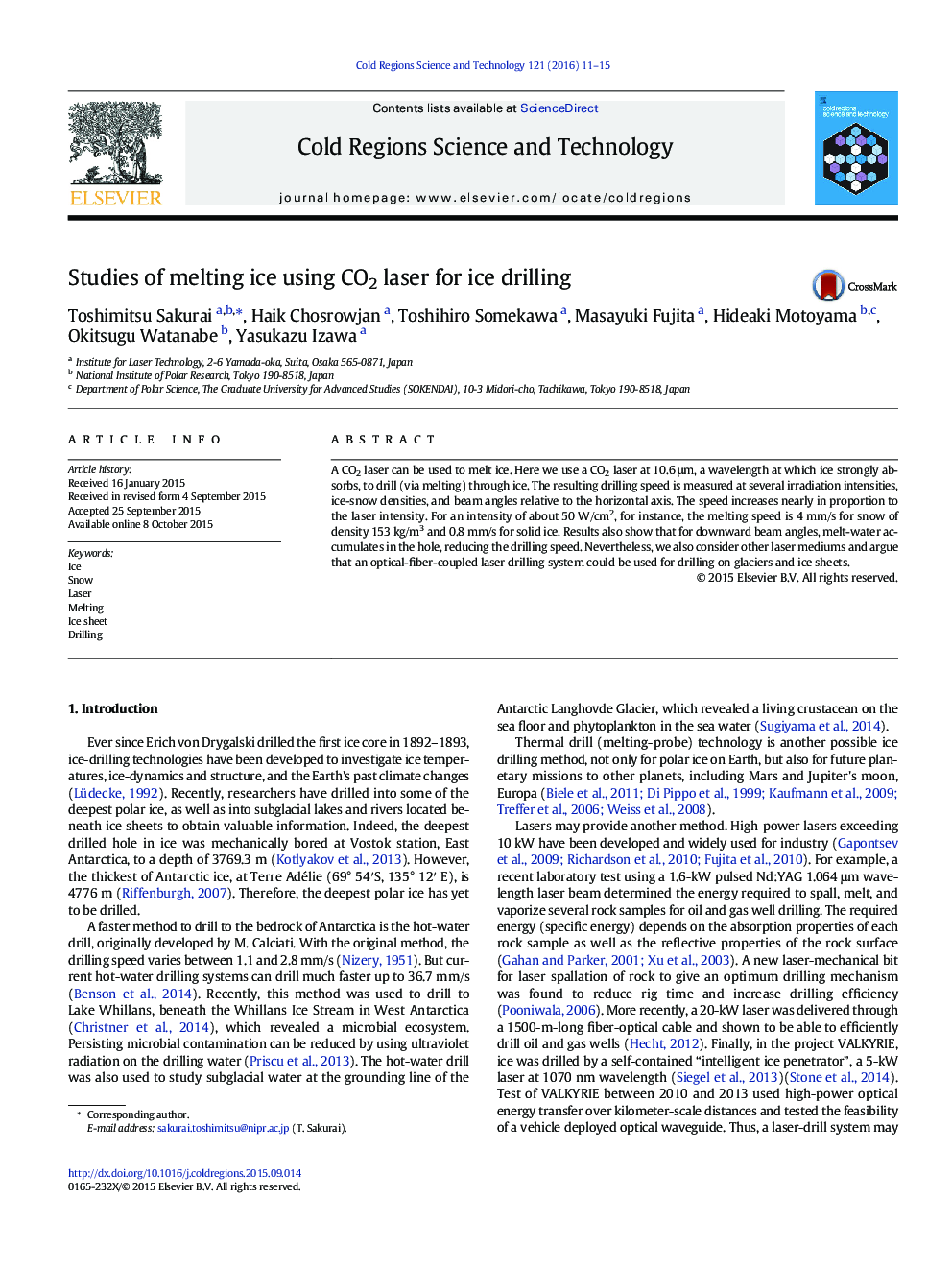| Article ID | Journal | Published Year | Pages | File Type |
|---|---|---|---|---|
| 6426639 | Cold Regions Science and Technology | 2016 | 5 Pages |
â¢We melted snow and ice by CO2 laser.â¢The melting speed increases nearly in proportion to the laser intensity.â¢The melt-water accumulate in the hole reduces the melting speed.â¢We argue an optical-fiber-coupled laser drilling system.
A CO2 laser can be used to melt ice. Here we use a CO2 laser at 10.6 μm, a wavelength at which ice strongly absorbs, to drill (via melting) through ice. The resulting drilling speed is measured at several irradiation intensities, ice-snow densities, and beam angles relative to the horizontal axis. The speed increases nearly in proportion to the laser intensity. For an intensity of about 50 W/cm2, for instance, the melting speed is 4 mm/s for snow of density 153 kg/m3 and 0.8 mm/s for solid ice. Results also show that for downward beam angles, melt-water accumulates in the hole, reducing the drilling speed. Nevertheless, we also consider other laser mediums and argue that an optical-fiber-coupled laser drilling system could be used for drilling on glaciers and ice sheets.
